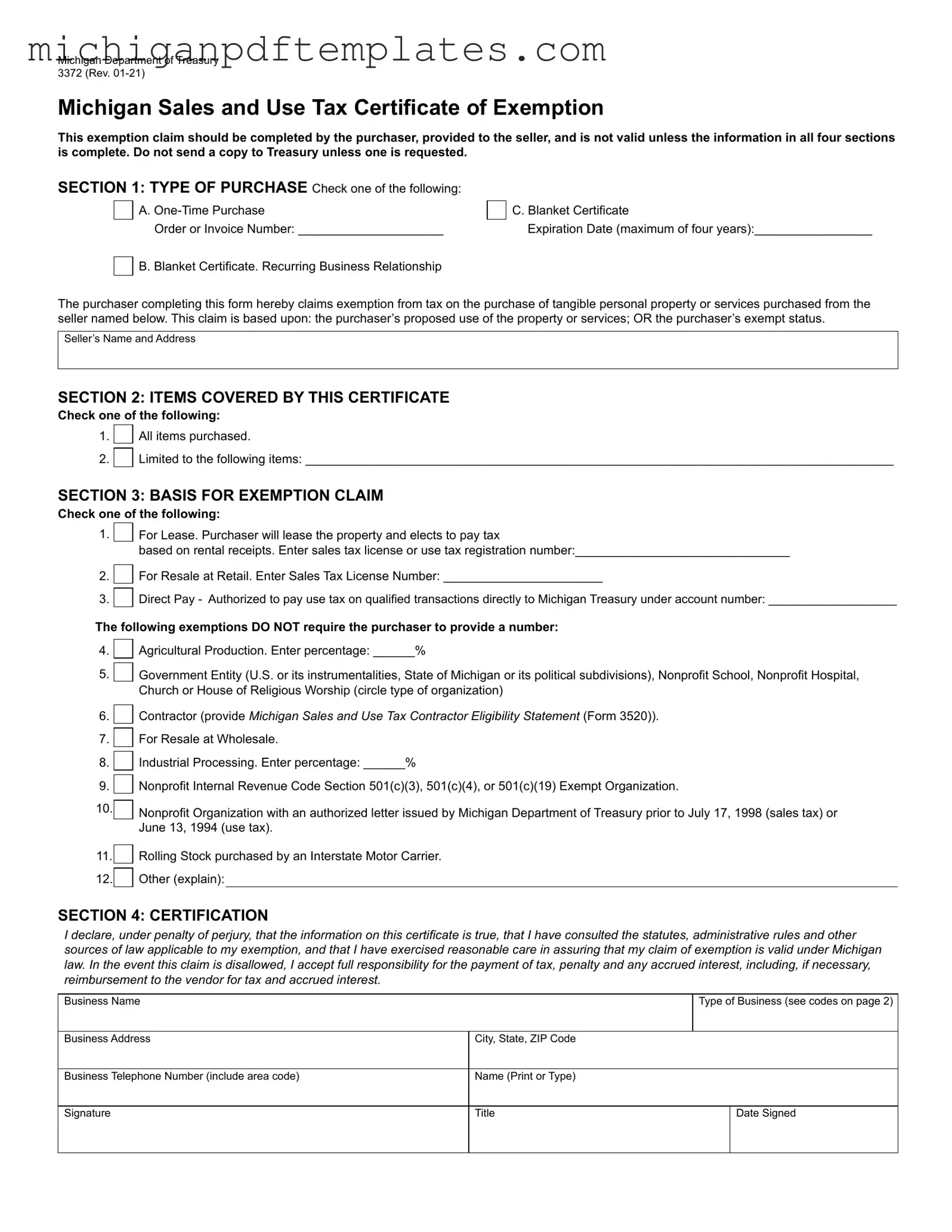The Michigan Department of Treasury Form 3372, officially known as the Michigan Sales and Use Tax Certificate of Exemption, serves as a vital tool for purchasers seeking to claim exemption from sales and use tax on eligible transactions. This form must be completed by the purchaser and presented to the seller, ensuring that all four sections are filled out accurately for the exemption to be valid. The first section allows the purchaser to indicate the type of purchase, whether it is a one-time purchase or a blanket certificate for a recurring business relationship, along with necessary details such as order numbers and expiration dates. In the second section, the form requires the purchaser to specify which items are covered by the exemption—either all items or a limited selection. The third section outlines the basis for the exemption claim, offering various categories that include resale, leasing, and specific exemptions for agricultural production and nonprofit organizations, among others. Finally, the certification section mandates that the purchaser affirms the truthfulness of the information provided, acknowledging their responsibility for any tax liabilities that may arise if the claim is disallowed. It is crucial for both purchasers and sellers to understand the implications of this form, as improper claims can lead to significant penalties and interest charges.
